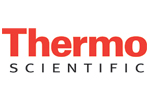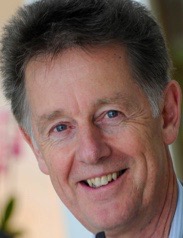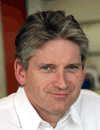08:00 |  Free Workshop Free Workshop
PCR without DNA purification – Thermo Scientific Direct PCR
|
|
Session: Point of Care and Field Ready Pathogen Detection Devices |
| |
09:30 |  | Keynote Presentation Recent Advances in Detection and Biosensors
Christopher Lowe, Professor, University of Cambridge, Director, Cambridge Academy of Therapeutic Sciences, United Kingdom
Many extravagant claims have been made in the past two decades about the likely impact of biosensors on the diagnostics industry: In reality, the current market size for biosensors represents ~14% of the global diagnostics market and is dominated entirely by sensors for one analyte, glucose. This presentation looks at the need for, and advantages of biosensors, the technology that has been developed over the past two decades to address these perceived needs, but, in reality, has failed to do so, and describes newer technologies which may circumvent the problems and suggests how they are likely to have a much more significant impact in the future, particularly in sectors such as medical diagnostics and biodetection. Examples of optical and acoustic technologies will be given. |
|
10:00 | Molecular Pathogen Detection and the Challenge of Preanalytics for POCT
Till Bachmann, Reader, University of Edinburgh, United Kingdom
MDx at point of care at competitive costs remains an unmatched task which is mostly defined by the requirement of molecular detection technologies for highly processed and pure samples. We addressed this task at the level of sensitivity, specificity, and kinetics of the implemented biochip technologies. |
10:30 | Coffee Break and Networking in the Exhibition Hall |
11:15 | BSI Performs Rapid and Quantitative Serological Assays: Prospects For Use in the Near-Patient Setting and the Field
Amanda Kussrow, Senior Research Fellow, Vanderbilt University, United States of America
|
11:45 | Magnetic Bead-Based Lab-on-a-chip systems For Rapid Detection and Identification of Avian Influenza Virus
Dang Duong Bang, Head, Technical University Of Denmark, Denmark
A general introduction of the magnetic bead-based systems and examples of application of the method as the results of different National and EU funded projects at the Laminate (DTU-Vet) and the BioLabChip group (DTU-Nanotech) and other partners from the EU will be presented. |
12:15 | Lunch and Networking in the Exhibition Hall |
12:45 |  Free Workshop Free Workshop
Glosensor Technology: Intracellular Biosensors to Detect Signal Transduction in Living Cells
|
13:30 |  Free Workshop Free Workshop
Automatic High Content Screening for Life Sciences
|
13:30 | Poster Session |
14:15 | Diagnostics Using Nanobioelectronics Based Sensing Systems
Alfredo Muniz, Postdoctoral Researcher, Institut Catala de Nanociencia i Nanotecnologia, Spain
Recent advances in the field of nanobioelectronics based sensing systems that use either labeling with nanoparticles or even label-free technologies such as nanochannels will be shown. The developed devices have special interest for point of care diagnostics between other industries. |
14:45 | switchSENSE – A Novel Biosensing Principle to Detect and Analyze Molecules on a Chip
Ulrich Rant, Group Leader, Technical University of Munich, Germany
The implications of the switching dynamics measurement for a novel type of on-chip protein analysis will be discussed, in particular with respect to the engineering of antibodies. |
15:15 | Coffee Break and Networking in the Exhibition Hall |
16:00 | Biotests for Hazard Characterization of Waste
Reinhilde Weltens, VITO, VITO, Belgium
Biotests are used for hazard assessment of a variety of waste materials to demonstrate how biotests can provide information on the intrinsic toxicity of waste and how their results can be used for hazard classificatioin of waste. |
16:30 | Optical Classification of Human Embryonic Stem Cells
Tracy Melvin, Researcher, University of Southampton, United Kingdom
Optical approaches have been explored to enable the undifferentiated to be distinguished from differentiated stem cells. Our methods combine optical measurements, modelling and data analysis. This technique provides a novel approach with the potential for identification and sorting of stem cells. |
17:00 | Close of Conference |






